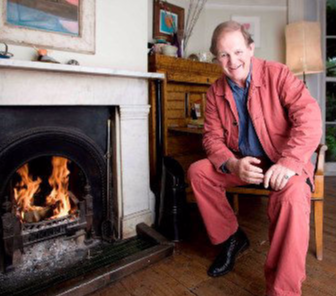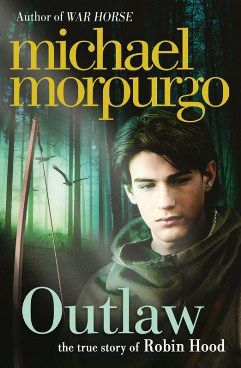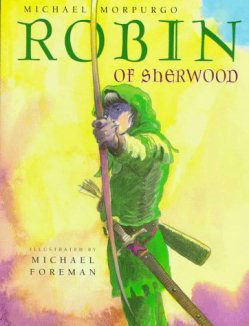Darker themes
AWW:
One of the things that struck me the most of about the book is how dark it could be. Violence, death and loss were a pervasive part of Robin of Sherwood/Outlaw right from the beginning with the storm and the fallen tree. Why did you emphasize that aspect of the legend? And how do you approach weaving those dark themes into a tale for children?
MM:
It is of course not a children's tale but a tale for everyone. Children though do understand right from wrong, and can readily see that oppression by the rich of the poor has to be resisted. The Sheriff of Nottingham is a bully. Children know about bullies just as grown-up children do, and we all know that in the end we have to stand up and fight for what we believe. Robin Hood in my story does just that. Such a struggle involves violence, it always has done.
AWW:
The depiction of the "Merry Men" (Outlaws in the 2012 edition and Outcasts in the original 1996 edition) as actually physically distinct - such as an Albino Marion and hunchback Will Scarlett - is strikingly different from the usual versions. It has a dark fairy tale feeling to it, but also seems to touch on something else. How did you come up with this depiction?
MM:
I came across the stories of the Cagots in South West France, a group of people very often distinguished by the whiteness of their hair, the foreshortened fingers and their lack of earlobes. Historically they were treated as a race apart. They even had their own separate door to come into church and sit separately, and they were made to live outside town walls. Throughout history in most societies there have been outcast groups like this, Gypsies, Jews amongst them. These have always been the most downtrodden, and it was therefore from such groups that I felt Robin would have recruited many of his supporters. Merry Men they were not.
AWW:
Why the change in nomenclature - from Outcasts to Outlaws - in the different editions?
MM:
I felt that in the first edition there had been too much emphasis on their being outcasts rather than Outlaws, actually it came to the same thing in the end, and I felt Outlaw was a more understandable way to describe them.
AWW:
How did you work on weaving the different Robin Hood stories into a new work, and was the process different from your other books on legends, such as your Arthurian novel?
MM:
I think the process was very similar in the sense I was able to select from the many, many stories of Robin, as I did of Arthur, those tales which seemed to suit the central character I had created and the motivation for doing what he did. And indeed there are aspects of the story which are absolutely my own and invented.
AWW:
Were there any aspects of the legend which you wanted to avoid when writing Robin of Sherwood/Outlaw?
MM:
As with so many legends the problem is to strip away those adaptations which seem to me to have corrupted the original to such an extent that the spirit of the ancient tale is altogether abandoned. So it seemed to me that the struggle for freedom that Robin embarks upon should not have a trite ending, (with Sean Connery riding into the forest as Richard Lion Heart to give his royal blessing to Robin and Marion's marriage.) I felt the ending should be as harsh as the rest of the story. After all he was a resistance fighter, and to die in the struggle seemed to me to be more in keeping. The Disney adaptation is fine in its own way - witty and good tunes, but if that is all that we now know of Robin Hood, that seems to be a pity, actually more than a pity.
[The return of the king dates from the aforementioned Gest ballad, where the king is called Edward. Outlaw returns to the original tradition in having Robin's leave the king's service. You can read that section of the Gest and the later ballad also featuring the king's return by following this link. - AWW]



Contact Us